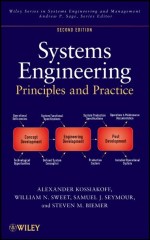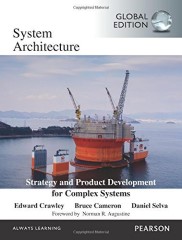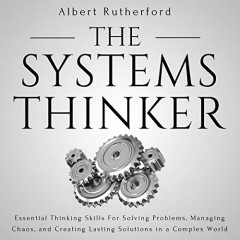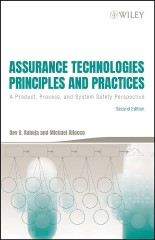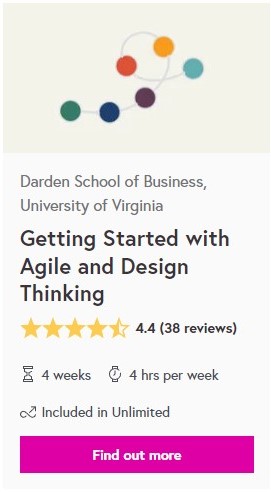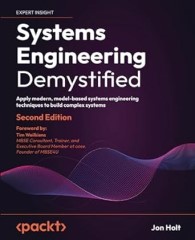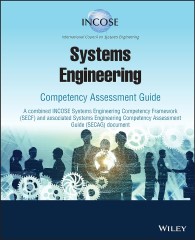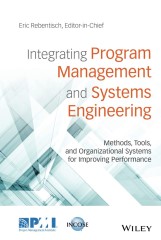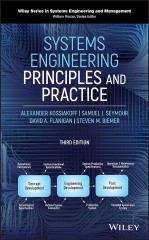Human factors engineering represents a $1.97 billion market opportunity by 2035, driven by the stark reality that 80-90% of workplace accidents stem from human error. This comprehensive field offers exceptional career prospects with salaries ranging from $73,000 to $225,000+, while delivering measurable returns of $2-6 saved for every dollar invested in human factors interventions. The discipline has evolved rapidly through 2024-2025, integrating AI technologies, addressing remote work challenges, and responding to workforce diversity trends that are reshaping how we design for human performance. Roots Analysis
The convergence of technological advancement and human-centered design has created unprecedented opportunities for professionals entering this field. Every 99 minutes, a worker dies from work-related injury in the United States, U.S. Bureau of Labor StatisticsAiche yet organizations implementing systematic human factors approaches consistently achieve 30-40% error reduction rates. This guide synthesizes the latest research, tools, and career pathways to help both newcomers and experienced professionals navigate this dynamic landscape.
Table of Contents
- The financial case for human factors investment
- Professional opportunities and career outlook
- Certification pathways and professional development
- Technology transformation and emerging tools
- Workforce diversity and generational considerations
- Current methodologies and best practices
- Recent research findings and breakthrough applications
- Major implementation successes and lessons learned
- Emerging challenges and future directions
- Conclusion
The financial case for human factors investment
Current workplace accident statistics reveal both the challenge and opportunity. The Bureau of Labor Statistics reports 2.6 million nonfatal workplace injuries in 2023, with costs reaching $3 trillion annually worldwide according to the International Labour Organization. This represents 3.94% of global GDP—a staggering figure that underscores the economic imperative for human factors expertise.
The human error factor dominates across industries with remarkable consistency. Construction leads with 95% of incidents attributed to human error, followed by manufacturing at 80%, aviation at 70-80%, and healthcare at 70%. Even seemingly unrelated sectors show similar patterns: 94% of motor vehicle accidents involve driver error, while 95% of data breaches result from human mistakes. IntechOpen
Despite these sobering statistics, workplace safety continues improving through systematic human factors applications. Fatal injury rates decreased from 38 deaths per day in 1970 to 15 per day in 2023. Aiche This progress demonstrates that evidence-based human factors interventions work when properly implemented and sustained.
Return on investment calculations consistently favor human factors spending. Healthcare case studies show returns ranging from 10:1 to 100:1, with specific examples including $1.7 million savings from medication labeling system optimization and zero errors achieved across 15,000+ COVID vaccinations through human factors-informed site design. The Alberta Health Services COVID-19 response exemplifies how rapid human factors deployment can prevent cascading failures in critical systems.
Recommended Further Reading Amazon BooksProfessional opportunities and career outlook
Human factors professionals command impressive salaries across multiple specializations. Human Factors Engineers average $177,702 according to Glassdoor, with ranges from $142,965 to $223,617. Glassdoor Geographic variations are significant: New Jersey and California lead at $113,920+ average salaries, while technology companies like Apple ($193,000+) and Google ($202,000+) offer premium compensation packages.
Career progression follows predictable patterns with substantial growth potential. Entry-level positions start at $67,821-$137,688, progressing to mid-career ranges of $90,000-$108,000, and reaching $106,000-$160,000 for senior professionals. Glassdoor The Economic Research Institute projects 21% salary growth potential over the next five years, supported by 4-10% job growth projections across related fields. USF Health Online
Multiple specialization paths offer diverse career trajectories. Ergonomists average $85,078 (range: $73,600-$99,933), Salary.com while UX Researchers command $156,813 average salaries. The highest-paying roles concentrate in healthcare, aviation, and technology sectors, where human factors expertise directly impacts safety and user experience outcomes.
Industry demand drivers create sustained employment opportunities. Healthcare’s focus on patient safety and medical device usability, transportation’s autonomous vehicle development, technology’s user experience expansion, and manufacturing’s Industry 4.0 transformation all require human factors expertise. The World Economic Forum predicts 78 million new jobs by 2030, with 77% of employers planning worker upskilling for AI and automation integration. World Economic Forum
| Industry | What Human Factors Professionals Do | What Success Looks Like in Your Career |
|---|---|---|
| Healthcare & Medical Devices | Design safer medical equipment interfaces, reduce medication errors, optimize clinical workflows, improve patient safety systems | You help save lives by preventing medical mistakes, design life-saving devices that doctors trust, become known for improving patient care |
| Aviation & Aerospace | Design cockpit controls, improve pilot training, optimize air traffic control systems, develop safety procedures | You contribute to aviation safety records, help pilots fly safely, work on cutting-edge aircraft technology, protect passenger lives |
| Manufacturing & Industrial | Reduce workplace injuries, optimize assembly lines, improve ergonomics, design safer equipment | You make factories safer for workers, help companies build better products, design workspaces that prevent injuries, improve quality of life for employees |
| Transportation & Automotive | Design vehicle dashboards, improve driver interfaces, optimize traffic systems, develop autonomous vehicle controls | You help prevent car accidents, design the cars of the future, make transportation safer for everyone, work on self-driving technology |
| Technology & Software | Design user-friendly software, improve website usability, create accessible interfaces, optimize human-AI interaction | You create products millions of people use daily, make technology more accessible, design award-winning user experiences, shape the future of AI |
| Energy & Utilities | Design power plant control rooms, improve safety procedures, optimize emergency response, enhance grid management | You help keep the lights on safely, prevent power outages, protect communities from energy accidents, ensure reliable electricity supply |
| Defense & Security | Design military equipment interfaces, improve command systems, optimize training programs, enhance situational awareness | You support military personnel with better equipment, help protect national security, design systems that save soldiers’ lives, contribute to defense capabilities |
| Financial Services | Design trading systems, improve risk management interfaces, optimize customer service, enhance fraud detection | You protect people’s money from fraud, make banking easier and safer, help prevent financial crises, design trusted financial systems |
| Retail & E-commerce | Optimize store layouts, improve checkout systems, enhance customer experience, design intuitive shopping interfaces | You help customers have better shopping experiences, design popular retail spaces, make online shopping easier, influence how people shop |
| Construction & Architecture | Design safer construction sites, improve equipment interfaces, optimize building layouts, develop safety procedures | You protect construction workers from harm, help build safer buildings, design equipment that prevents accidents, improve workplace conditions |
| Education & Training | Design learning systems, optimize classrooms, improve educational technology, develop effective training programs | You help students learn better and faster, design educational technology that transforms learning, improve teaching methods, shape future education |
| Pharmaceutical & Biotech | Optimize laboratory workflows, improve clinical trial design, enhance drug delivery systems, ensure regulatory compliance | You help develop life-saving medications faster, design better drug delivery methods, improve clinical research, contribute to medical breakthroughs |
Certification pathways and professional development
The Board of Certification in Professional Ergonomics (BCPE) provides the industry’s gold standard credentials. Bcpe The Certified Human Factors Professional (CHFP) requires a bachelor’s degree, three years of experience, and passing a comprehensive exam. BCPEWikipedia Total costs include $195 application processing, $450 examination fee, and $195 renewal every five years. Associate-level certifications (AHFP) accommodate professionals with less than three years of experience for $150 application fee. bcpe
Specialized certifications address industry-specific needs. The Certified Professional for Usability and User Experience (CPUX) Foundation level costs $163.70 and requires no prerequisites, making it accessible for career changers. Bunnyfoot +3 Healthcare professionals can pursue the Certified Professional in Human Factors in Health Care (CPHFH) for $549 domestic or $649 international, administered through PSI Assessment Centers. ihiInstitute for Healthcare Improvement
Professional organizations provide essential networking and development resources. The Human Factors and Ergonomics Society (HFES) offers research access, networking through HFES Connect, educational activities, and career services. Hfes +3 The International Ergonomics Association (IEA) operates through 55 federated member societies worldwide, providing global perspectives and standards development opportunities. IEA +2
Educational pathways span traditional and online formats. Top university programs include San Jose State University’s M.S. in Human Factors and Ergonomics, Embry-Riddle Aeronautical University’s online/on-campus options, and Northeastern University’s flexible co-op programs. San José State University +3 UC Berkeley’s Center for Occupational and Environmental Health offers a comprehensive online certificate program mapping to BCPE certification requirements. Berkeley
Recommended Future Learn Short CoursesTechnology transformation and emerging tools
Artificial intelligence integration represents the most significant technological shift affecting human factors practice. AI-enhanced decision-making tools like OpenAI’s o1 and Google’s Gemini 2.0 Flash provide reasoning capabilities that support human factors analysis. PubMed CentralScienceDirect However, 94% of employees familiar with generative AI tools indicates widespread adoption challenges, with 74% of companies struggling to generate tangible value from AI investments. McKinsey & Company
Remote work has fundamentally altered ergonomic considerations and assessment approaches. Research shows 21% of remote workers operate from bedrooms and 20% from couches, creating unprecedented ergonomic challenges. DeskTimeErgonomics The productivity data reveals complex tradeoffs: while the Bureau of Labor Statistics found 0.05 percentage-point increases in Total Factor Productivity for each 1% increase in remote work, U.S. Bureau of Labor StatisticsScienceDirect 79% of managers believe teams are more productive remotely, yet only 68% of full-time workers actually prefer hybrid schedules.
Advanced assessment tools have revolutionized human factors evaluation capabilities. OPUS™ by Emergo provides cloud-based platforms including Root Cause Analysis wizards, Human Factors Test Validation calculators, and Medical Device Usability Scores. emergobyul SHERPA Human Factors Software offers Hierarchical Task Analysis, Predictive Human Error Analysis, and Performance Influencing Factors assessment capabilities. Human Reliability These tools enable more sophisticated and efficient human factors interventions than ever before.
Virtual and augmented reality applications are expanding rapidly in human factors domains. The AR/VR market projection of $237.0 billion by 2032 (up from $16.77 billion in 2023) reflects growing adoption for training, assessment, and intervention applications. Smart glasses usage is expected to grow from 678,600 units in 2023 to 13 million units by 2030, enabling real-time human factors monitoring and feedback systems.
Biometric monitoring and multimodal assessment represent cutting-edge developments. Real-time cognitive load assessment using EEG and eye-tracking achieves 86-89% accuracy, while pupil dilation responses provide reliable indicators of error recognition. PubMed Central These technologies enable dynamic difficulty adjustment in training systems, showing mean effect sizes of 0.78 for improved learning outcomes. PubMed Central
Workforce diversity and generational considerations
Generational shifts are reshaping human factors design requirements. Gen Z workers, projected to surpass Baby Boomers in the workforce by 2024, bring different technology expectations and work preferences. Research shows 62% of Millennials report high AI expertise, while generational differences in communication preferences (older generations preferring formal methods, younger preferring digital platforms) require careful consideration in system design.
Diversity and inclusion initiatives create new design challenges and opportunities. Organizations are setting targets for women (48%), disabled people (12%), and ethnic minorities (15%) in senior positions. Totaljobs Microsoft’s 2024 diversity report emphasizes designing for varied abilities and changing human needs, while 86% of EMEA employers integrate diverse factors into DEIB strategies.
Anthropometric diversity requires expanded design considerations. Mining industry research emphasizes equipment design accommodating the maximum range of physical diversity, moving beyond traditional percentile-based approaches. ScienceDirect This shift reflects growing recognition that inclusive design benefits all users while meeting legal accessibility requirements.
Cross-generational workplace dynamics affect technology adoption and training needs. While 48% of employees want formal AI training, preferences vary significantly by generation. Successful implementations require cross-generational mentorship programs, flexible communication frameworks, and tailored training approaches that address different learning styles and technology comfort levels.
Recommended Further Reading Amazon BooksCurrent methodologies and best practices
Evidence-based risk assessment methodologies have evolved significantly. Use-Related Risk Analysis (URRA) provides critical frameworks for medical device development, while Field-Level Risk Assessment (FLRA) enables real-time hazard identification in dynamic environments. Best practices emphasize quantitative rather than qualitative criteria, with standardized risk assessment approaches minimizing subjective judgment errors. VelocityEHS
Cognitive load theory advances enable more sophisticated interventions. EEG and fNIRS-based cognitive load assessment achieves 86% classification accuracy with 10 Hz temporal resolution. PubMed Central Multimodal data integration improves prediction accuracy by 41%, while dynamic difficulty adjustment shows mean effect sizes of 0.78 for enhanced learning outcomes. PubMed Central
Participatory design methods are expanding through digital transformation. Remote participatory methods including virtual workshops and co-creation sessions maintain user engagement while reducing geographic barriers. IxDF AI-assisted user-centered design integrates machine learning for behavior prediction, while accessibility-first design principles ensure inclusive outcomes from project inception.
Workplace design research provides clear performance indicators. Studies show single offices produce the best performance for knowledge workers, while optimized office concepts can increase productivity by up to 13%. Springer Activity-Based Working (ABW) shows negative impacts on performance and satisfaction, providing evidence against popular open-plan trends. Springer
Recent research findings and breakthrough applications
Cognitive psychology research has yielded practical applications for error prevention. Error-related brain activity can be detected with 89% accuracy using EEG-based systems, while pupil size entropy measures cognitive processing complexity during error recognition. SpringerScienceDirect These findings enable real-time intervention systems that can prevent errors before they occur.
Organizational behavior studies reveal the importance of cultural factors in human factors success. Research shows 77% of workers consider culture before applying for positions, making cultural fit a critical predictor of intervention success. TotaljobsMindsair Work-life balance emerges as crucial for employee loyalty and productivity, while diversity and inclusion drive creativity and innovation when properly implemented.
Decision-making research has refined understanding of cognitive biases and interventions. Risk-taking behavior increases under cognitive load for both individuals and groups, while attention allocation imbalances rather than distorted risk perceptions shape decision-making. ScienceDirect These findings inform the design of decision support systems and training programs.
Human-AI collaboration research identifies key success factors. Studies show empathetic management significantly improves AI adoption outcomes, while human-in-the-loop systems require careful balance between automation and human oversight. SpringerBigDATAwire Organizations with human-centric work environments are 3.8x more likely to see high employee performance, emphasizing the continued importance of human factors in automated systems.
Major implementation successes and lessons learned
Healthcare implementations demonstrate measurable human factors impact. MedStar Health’s cardiovascular risk calculator integration across 575+ physicians achieved successful adoption through embedded design without hard stops. medstarhealth Their sepsis detection clinical decision support system, tested with 190 clinicians across 12 hospitals, identified critical gaps in novice understanding while improving decision-making processes. PSNetmedstarhealth
Transportation sector achievements show systematic safety improvements. Rail Safety and Standards Board’s cognitive underload prevention program for train drivers resulted in improved awareness and effective self-management techniques. rssb The passenger seat comfort assessment project developed robust specifications balancing comfort with safety requirements, standardizing industry practices. rssb
Manufacturing successes highlight Industry 4.0 integration potential. Collaborative robots (cobots) implementations in 2024-2025 show improved safety and productivity through human-factors-informed design. Occupational exoskeleton deployments reduce musculoskeletal disorders while maintaining worker autonomy and job satisfaction. ResearchGate
Notable failures provide critical learning opportunities. The Boeing 737 MAX crisis ($80+ billion total cost) demonstrated the consequences of inadequate human factors consideration in safety-critical systems. Cometanalysis Tesla Autopilot incidents (736 crashes since 2019) highlight the challenges of human-AI collaboration in partially automated systems. Arash LawCraft Law Firm The 2021 Texas power grid failure ($195+ billion damages) showed how human factors failures can cascade across interconnected systems.
Emerging challenges and future directions
Grand challenges for human factors practitioners include societal thinking evolution, Industry 5.0 human-AI collaboration, climate change considerations, personalized health interventions, and metaverse applications. These challenges require interdisciplinary approaches combining traditional human factors methods with emerging technologies and social considerations. Taylor & Francis Online
Professional development must adapt to rapid technological change. The field requires continuous learning capabilities, with 48% of employees wanting formal AI training and organizations needing to balance automation benefits with human skill development. Cross-generational mentorship programs and flexible learning approaches become essential for field advancement.
Implementation strategies must address both technical and cultural factors. Successful human factors interventions require stakeholder engagement, data-driven decisions, iterative design approaches, cultural adaptation, and sustainability planning. Human Factors 101 The evidence shows that technical solutions alone are insufficient without proper organizational support and cultural alignment.
Conclusion
Human factors for work optimization represents a mature field experiencing rapid transformation through technological advancement and societal change. The combination of strong financial returns, growing market demand, and technological capability creates exceptional opportunities for both new and experienced professionals. Success requires balancing traditional human factors principles with emerging technologies, maintaining focus on measurable outcomes while adapting to changing workforce demographics and work arrangements.
The field’s evolution from reactive safety improvements to proactive performance optimization reflects its growing sophistication and strategic importance. Organizations that invest in human factors expertise and systematic implementation approaches consistently achieve superior safety, productivity, and user satisfaction outcomes. As workplace technology continues advancing, human factors professionals will play increasingly critical roles in ensuring these advances truly serve human needs and capabilities.
The evidence clearly supports continued investment in human factors education, certification, and implementation across all industries. The combination of strong career prospects, measurable impact potential, and technological advancement opportunities makes this an exceptional time to enter or advance in the human factors field.


